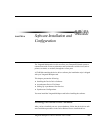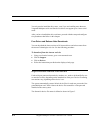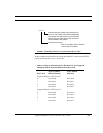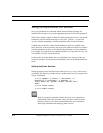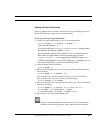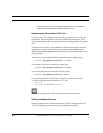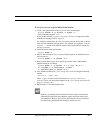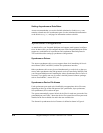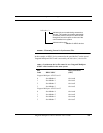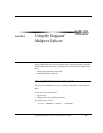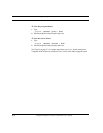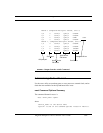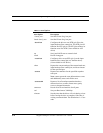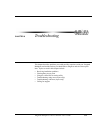
Software Installation and Configuration
4-8 Vanguard Multiport 4520CP Controller User’s Guide
Setting Asynchronous Data Rates
Aurora recommends that you use the SunSoft Admintool or Solaris stty com-
mand to set baud rates for asynchronous ports. See the Admintool documentation
or the Solaris stty(1) man page for information on how to do this.
Synchronous Configurations
As stated earlier, your Vanguard Multiport card supports multi-protocol configura-
tions. In other words, you can configure the ports on the Vanguard Multiport card to
support any combination of asynchronous and synchronous data-link protocols.
This section describes setting up synchronous configurations.
Synchronous Drivers
The Aurora synchronous driver ases supports frame level interfacing for bit-ori-
ented frames (HDLC and SDLC) and the Sun synchronous interface.
Other synchronous drivers may be used simultaneously or exclusively so that you
can use other synchronous data link protocols (such as Frame Relay and PPP) with
your Vanguard Multiport card. Installing the Aurora Synchronous Device Driver is
necessary if you plan to run one of Aurora’s data link protocol software packages
such as Aurora HDLC, Aurora X.25, etc.
Synchronous Device File Names
Each synchronous port needs to be identified by an appropriate device file name,
depending on the type of data link protocol (bit synchronous, byte synchronous,
Sun synchronous) to be used on the port.
The system automatically creates Solaris device files for each new port on the Van-
guard Multiport card. Table 7 shows the device files created for two four-port cards
installed in the first available slot and in the next available slot.
The format for synchronous device file names is defined as shown in Figure 4.




